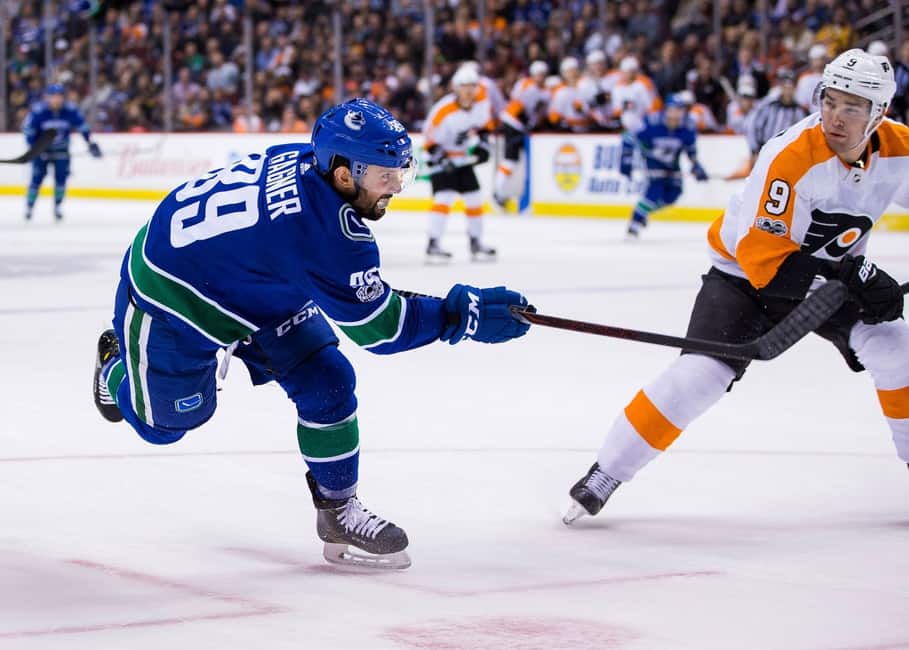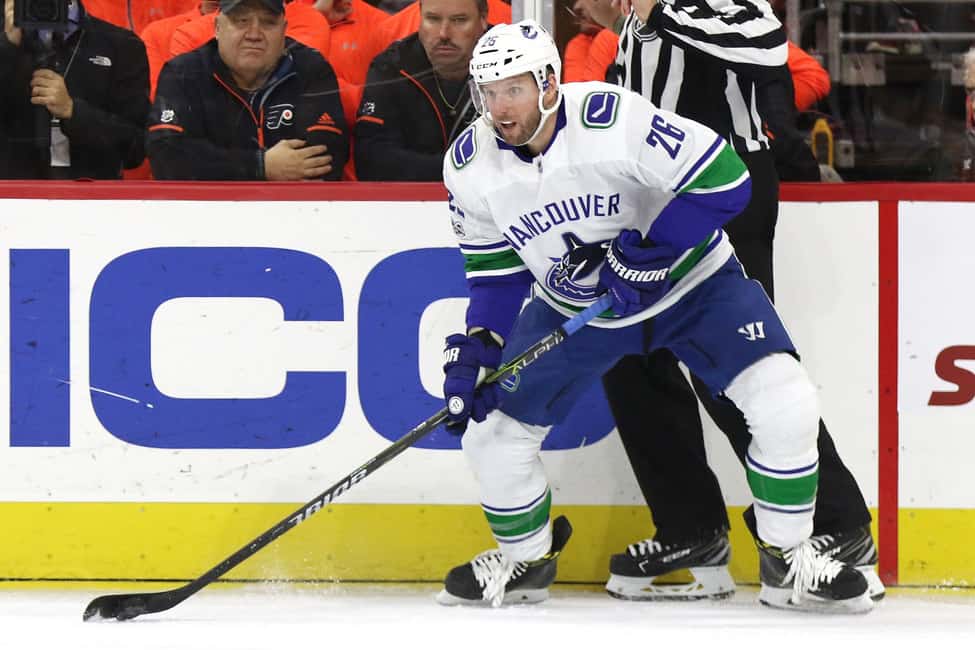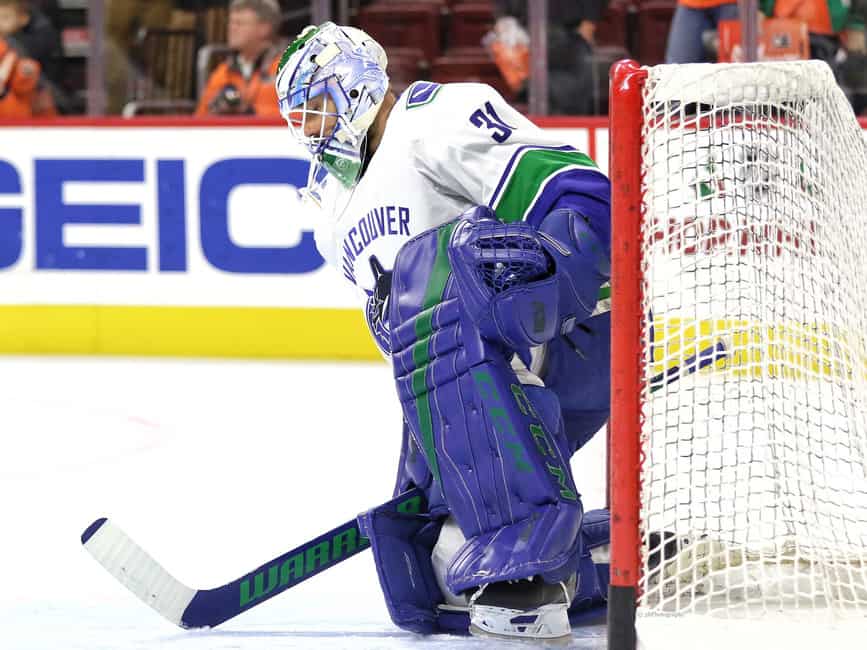Canucks’ GM Jim Benning was a busy man this offseason.
After finishing 28th overall in 2016-17, the Canucks made a flurry of moves in the summer to bolster the depth on the roster. While none of these moves was as flashy individually as the 2016 signing of Loui Eriksson, there were still a total of six NHL players signed, three of them to multi-year deals.
Given that we’re now officially past the 2/5ths mark of the season, we have a large enough sample size to reflect on these signings. Unfortunately for the Canucks, many seem poor in hindsight. With the team battling injuries to key players like Bo Horvat, Sven Baertschi, Brandon Sutter, and Chris Tanev, they’ve been reeling, losers in five of their last six games.
Much of the blame for this failure falls on the players signed who have failed to step up in light of these injuries.That being said, let’s look at how each offseason signing has performed relative to expectations.
Sam Gagner

Contract signed: 9.45M/3 years(3.15M AAV)
Expectation: Middle-six scorer, PP specialist
Signing a player who’s coming off a career-best performance in free agency is usually a recipe for disaster. Sam Gagner’s eight points in 33 games do nothing to prove otherwise.
He was signed to help improve Vancouver’s secondary scoring after tallying a career-high 50 points last season with the Columbus Blue Jackets. Instead, he’s put up just three even strength points and sits 14th out of 16 Canucks forwards with 0.62 even strength points produced per hour.
While his 5.8% shooting clip and 94.1 PDO indicate he’s been at least a bit unlucky, there’s simply no excuse for Gagner to be only on pace for seven even strength points over a full 82 games. The 28-year-old needs to be better, particularly when you consider the absence of top-line forwards Horvat and Baertschi.
Alex Burmistrov
Contract signed: 900K/1 year
Expectation: Bottom-six scoring depth
After scoring 14 points in 26 games to end the season with the Arizona Coyotes, the Canucks were hoping Burmistrov could continue that pace this season. They were particularly hopeful considering newly hired assistant coach Newell Brown’s familiarity with the Russian in Arizona.
Unfortunately, that hasn’t happened, with Burmistrov posting just two goals and six points in 21 games.
There are also questions about his ice time. Even with injuries to Horvat and Sutter, the 26-year-old is averaging just 12:20 a night. He’s also been a healthy scratch for 12 games, an issue that’s drawing the ire of the Burmistrov camp.
Milstein has talked with the #Canucks about Burmistrov's situation but has not asked for a trade.
— Rick Dhaliwal (@DhaliwalSports) December 11, 2017
Vancouver appears ready to move on, however, with Elliotte Friedman believing that the Canucks are already looking to move on from the former 8th overall pick in a recent article for Sportsnet. No matter which way you look at it, this low-risk move simply hasn’t paid off. The Canucks haven’t gotten the scoring depth they need up the middle and Burmistrov is unhappy with his role.
Thomas Vanek

Contract signed: 2M/1 year
Expectation: Third line scoring forward
A common theme with these signings has been the expectation of secondary scoring. Fortunately for the Canucks, at least one player has fit that bill in Thomas Vanek. The 33-year-old is tied for fifth in team scoring with 18 points in 33 games. He’s also ahead of both Horvat and Baertschi when it comes to points per hour.
He’s been struggling of late when the team needs him the most though, adding just one point in his last eight games and there are signs that regression is due.
Vanek ranks 13th and 14th among Vancouver forwards respectively when it comes to Corsi % and Goals for %. This hasn’t been because of poor luck. His expected goals for percentage ranks him second worst at 39.5%. It indicates that the Canucks are having major issues in controlling possession and scoring with Vanek on the ice.
It’ll be interesting to track how the scoring winger continues playing this season. Will his horrid underlying metrics eventually drag down his raw offensive output or can Vanek elevate his game and continue to provide invaluable secondary scoring?
Michael Del Zotto
Contract signed: 6M/2 year(3M AAV)
Expectation: Middle-pairing, puck-moving defenceman
The first 10-15 games for Del Zotto were extremely encouraging. He was thriving despite averaging a whopping 24:17 TOI through the first 15 games. Since the return of Alex Edler though, MDZ has seen both his ice time and performance decrease.
His 45.3% Corsi For rating ranks third worst amongst Canucks’ blueliners. His lack of ability to control possession is rubbing off on his teammates as well; with Canucks’ players controlling possession at a 3.57% lower rate when playing with Del Zotto.
More concerning, however, is the rate at which Del Zotto is allowing goals. Opposing teams are scoring 2.91 goals per hour with the blueliner on the ice. This is the worst on the team by almost half a goal.
There’s also a case to be made that Derrick Pouliot’s emergence has made Del Zotto redundant. It’s an interesting idea that will probably get revisited if the team ever becomes fully healthy on the blueline.
Anders Nilsson

Contract signed: 5M/2 years(2.5M AAV)
Expectation: 1B goaltender
Between the birth of another child and Travis Green’s preference towards Jacob Markstrom, Nilsson is on pace for just 27 starts.
A third of the starts is a lot less than we expected given that Nilsson was supposed to push Markstrom for the number one role. It’s especially intriguing when we consider that Markstrom hasn’t done anything exceptional to establish himself as the starter.
Unfortunately for Nilsson, his hot start to the season has come to an end as well; giving no reason for Green to give him an extended run of games. The 6’6″ Swede has allowed 21 goals in his six starts (3.5 per game) to go along with a porous .893 save percentage.
Overall, Nilsson is tied with Markstrom with a .912 save percentage. The difference, however, is that the former is allowing more than half a goal extra per game (3.13 total). This is a far cry from Nilsson’s performance in Buffalo, where he posted a 2.67 GAA and .923 save percentage last season.
For better or for worse, the 27-year-old is already fading fast in the starting goalie conversation. Nilsson will have to turn his play around and outperform Markstrom for an extended period to even get some consistent starts at this point in time.
Patrick Wiercoch
Contract signed: 650K/1 year
Expectation: No.6/No.7 defender
Wiercoch is a perfect example of a player that falls in the line of fire with regards to the analytics versus eye test debate. Historically, he’s proven to be an analytics darling; a player that is statistically proven to control possession and move the puck at an above-average clip.
On the contrary, scouts dislike his foot speed and the way he fails to use his 6’5″ frame. Furthermore, his underlying metrics took a massive hit last year playing for the league-worst Colorado Avalanche. The Canucks were hoping that last year was an anomaly; that Wiercoch’s track record proved that he was a capable bottom pairing defender in the NHL.
The Burnaby native was cut this training camp though, bested by Alex Biega for the 7th defenceman role. He’s yet to dress for the Canucks, only joining the team as a healthy scratch for the month of November. Time will tell if he rebounds, but we’re almost halfway through the season and Wiercoch has yet to prove that he’s a better player than his performance with the Avs would indicate.
*All stats courtesy Corsica and Natural Stattrick